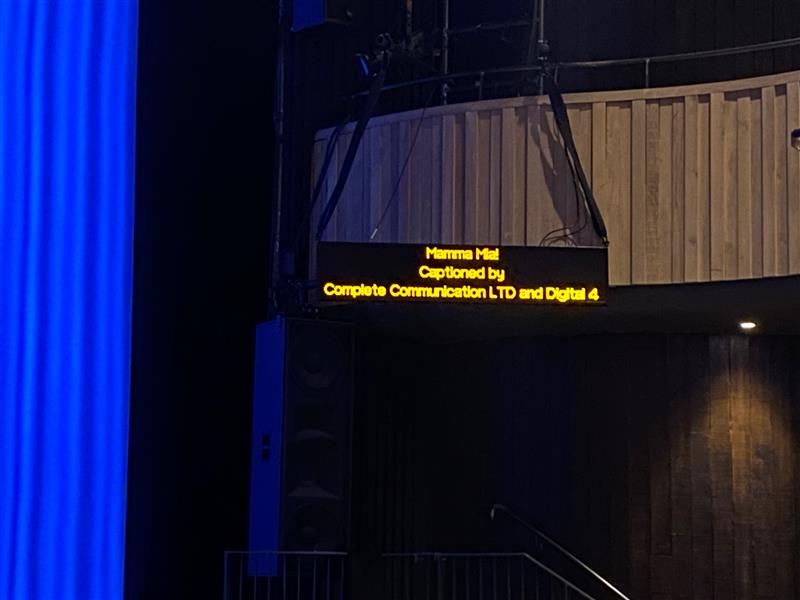In the vibrant world of performing arts, the theatre has always held a special place in captivating audiences with its live storytelling. For centuries, theatre has provided a platform for creative expression and entertainment. However, accessibility remains a crucial challenge for some individuals, particularly within the deaf community. Enter theatre captioning, a powerful tool that ensures inclusivity and allows everyone to experience the magic of live performances.
What is Theatre Captioning?
Theatre captioning is a method of providing synchronised text captions alongside live performances. It aims to enhance the accessibility of theatrical shows for a range of individuals, not only those who are deaf or hard of hearing. The captions typically appear on a screen or display unit, either placed near the stage or within the theatre’s seating area. These captions provide a real-time written representation of the dialogue, lyrics, sound effects, and other auditory elements present during the performance.
Who benefits from theatre captioning?
One of the primary benefits of theatre captioning is its role in fostering inclusivity. By providing real-time captions, deaf and hard of hearing individuals can fully immerse themselves in the performance, understanding the storyline, jokes, and emotions expressed through dialogue and music.
As well as helping deaf and hard of hearing people access the performance, captioning can also benefit people who have a reduced comprehension of the language, as well as people who find it challenging to concentrate on one thing at a time.
Even for those who are mildly deaf, theatre captioning can significantly improve comprehension. Sometimes, background noises, strong accents, or poor sound quality can hinder the ability to catch every spoken word. Captions serve as a valuable aid to ensure no details of the performance are missed.
Theatre captioning can also benefit non-native speakers of the production’s language or those learning the language. The presence of captions helps them follow the dialogue more easily, enhancing their language skills and enriching their overall experience.
The technology used for theatre captioning is designed to be discreet, ensuring that it doesn’t distract or disturb other audience members. The captions are typically placed in a way that is visible to those who need them while remaining inconspicuous to others.
What settings will theatre captioning take place?
Now moving on to where you might find theatre captioning. Many theatres and playhouses around the world have embraced theatre captioning to promote accessibility and inclusivity. Major cities often have dedicated venues that regularly offer captioned performances or even entire seasons with accessible shows.
The most prominent theatre districts, such as Broadway in New York City and the West End in London, have been proactive in adopting captioning technology. High-profile productions frequently include captioned performances, making these iconic shows accessible to a broader audience.
Captioning is also utilised in touring productions, where the show travels to different cities and venues. This ensures that people across various regions can enjoy the same level of accessibility as those attending fixed-location performances.
In addition to theatres, many theatre festivals and special events now incorporate captioning to create an all-encompassing experience for attendees. This inclusion helps to foster a sense of belonging and celebrates diversity within the performing arts community.
The journey to becoming a captioner
Now that you have an understanding of what theatre captioning is, let’s discuss how you become a theatre captioner! The majority of the Complete Communication team recently trained as theatre captioners, which involved us undertaking a 2-day course where we learnt about the equipment, the technical side of things, and how actually to create the captions. These were two intense days, jam-packed with lots of information on subjunctive clauses and the technicalities of the English language – it’s safe to say that all of our brains were hurting!
Once you complete the initial training, it is practice, practice, practice! It feels like there is always something new to learn, which is what makes the role so exciting. When I was prepping for a show recently, I spent two hours a week working through the script and checking all the dialogue was formatted correctly. As we got closer to the show date, I spent more and more time on the script, ensuring that every little detail was correct.
Complete Communication’s favourite moment from providing theatre captioning
Personally, my favourite moment from providing theatre captioning has to be when we provided the captions for our first-ever show, “Mamma Mia!” and we saw our name on the screen. It was a great feeling to know that we were making a direct impact to the audience and making theatre accessible!

